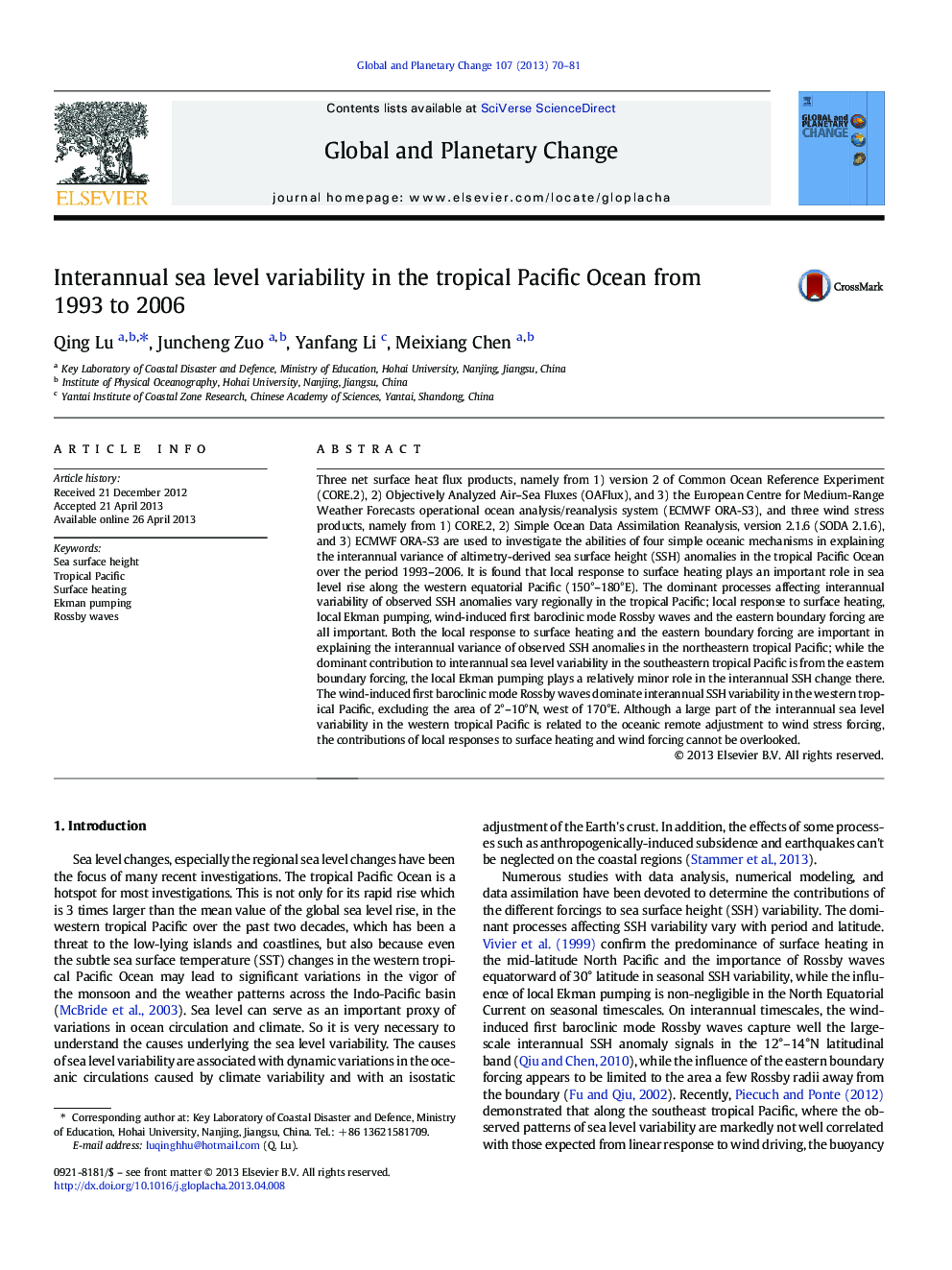| کد مقاله | کد نشریه | سال انتشار | مقاله انگلیسی | نسخه تمام متن |
|---|---|---|---|---|
| 4463508 | 1621674 | 2013 | 12 صفحه PDF | دانلود رایگان |

• We provide a quantitative understanding of four processes of interannual SSH change.
• Surface heating is important in sea level rise along the western equatorial Pacific.
• The dominant processes affecting interannual SSH variability vary regionally.
Three net surface heat flux products, namely from 1) version 2 of Common Ocean Reference Experiment (CORE.2), 2) Objectively Analyzed Air–Sea Fluxes (OAFlux), and 3) the European Centre for Medium-Range Weather Forecasts operational ocean analysis/reanalysis system (ECMWF ORA-S3), and three wind stress products, namely from 1) CORE.2, 2) Simple Ocean Data Assimilation Reanalysis, version 2.1.6 (SODA 2.1.6), and 3) ECMWF ORA-S3 are used to investigate the abilities of four simple oceanic mechanisms in explaining the interannual variance of altimetry-derived sea surface height (SSH) anomalies in the tropical Pacific Ocean over the period 1993–2006. It is found that local response to surface heating plays an important role in sea level rise along the western equatorial Pacific (150°–180°E). The dominant processes affecting interannual variability of observed SSH anomalies vary regionally in the tropical Pacific; local response to surface heating, local Ekman pumping, wind-induced first baroclinic mode Rossby waves and the eastern boundary forcing are all important. Both the local response to surface heating and the eastern boundary forcing are important in explaining the interannual variance of observed SSH anomalies in the northeastern tropical Pacific; while the dominant contribution to interannual sea level variability in the southeastern tropical Pacific is from the eastern boundary forcing, the local Ekman pumping plays a relatively minor role in the interannual SSH change there. The wind-induced first baroclinic mode Rossby waves dominate interannual SSH variability in the western tropical Pacific, excluding the area of 2°–10°N, west of 170°E. Although a large part of the interannual sea level variability in the western tropical Pacific is related to the oceanic remote adjustment to wind stress forcing, the contributions of local responses to surface heating and wind forcing cannot be overlooked.
Journal: Global and Planetary Change - Volume 107, August 2013, Pages 70–81